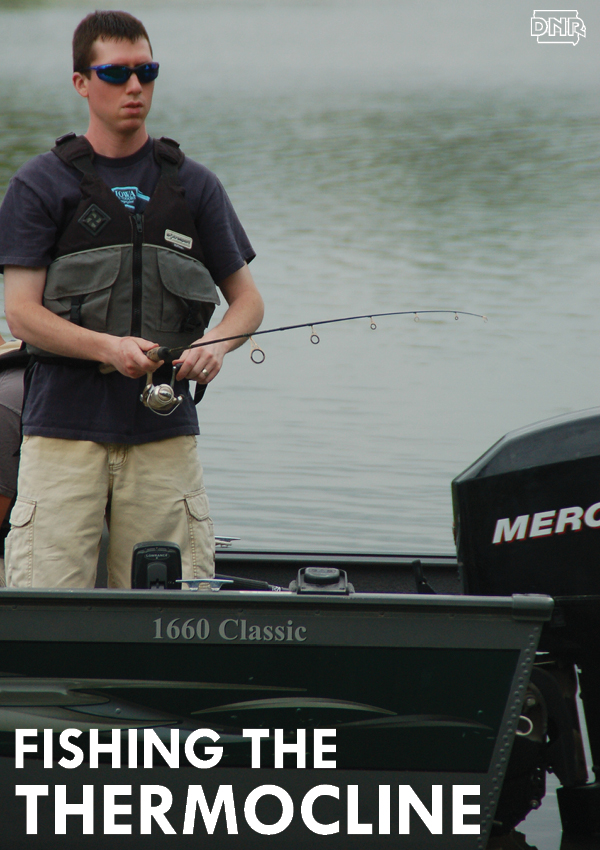 Back in early May, the air was warm and the water was churning in Iowa lakes. Crappies were in tight to shore, ready to drop their life-giving bundle of eggs, and bluegills were just a cast away waiting for their turn. It was spring, the spawn was on and panfish were taking just about anything hook, line and sinker. Anyone could catch fish.
Back in early May, the air was warm and the water was churning in Iowa lakes. Crappies were in tight to shore, ready to drop their life-giving bundle of eggs, and bluegills were just a cast away waiting for their turn. It was spring, the spawn was on and panfish were taking just about anything hook, line and sinker. Anyone could catch fish.
But in the summer, water temperatures and oxygen levels change. Use these tips to learn to read the water, and keep your live wells and stringers full.
Beginning in late May through mid-June, a layer begins to form in lakes that influences how people fish during the summer. The layer, called the thermocline, is a natural barrier between warm water in the top of the water column and cold water in the bottom. These warm and cold layers do not mix.
Cool water is heavy and sinks to the bottom of the water column. The lack of mixing with surface waters prevents new oxygen from entering this cool water and over time, organisms use up most of the oxygen. By mid-summer, the oxygen levels below the thermocline fall to the point where fish cannot stay for long. Fish concentrate in the warmer, oxygenated water, but will typically stay as close to the thermocline as possible, since it has the cooler temperature and sufficient oxygen.
Typically, a thermocline forms in lakes deeper than 10 feet, including farm ponds. Other factors can also influence where the thermocline is established. For example, a turbid lake may have a thermocline at 5 feet while a clear lake thermocline could be at 16-plus feet.
“Some of today’s high quality, high resolution depth finders will show a fuzzy line which will be the organisms and other materials that will identify where the thermocline is and show you at what depth to fish,” says Chris Larson, supervisor for fisheries in southwest Iowa. “At times you can catch fish all day as long as you are looking for suspended fish,” Larson says. “But fish tend to be more active early and late in the day during the summer.”
In the fall, when the surface water temperature cools to the point where it is colder than the water below it, it sinks to the bottom and the lake turns over. Fish then use the entire water column. This usually happens over the course of a few days from late September to mid-October.
For more tips, watch our Iowa Fishing board on Pinterest, follow us on Twitter and sign up for the weekly fishing report.
This article originally appeared in the July/August 2009 issue of Iowa Outdoors magazine.